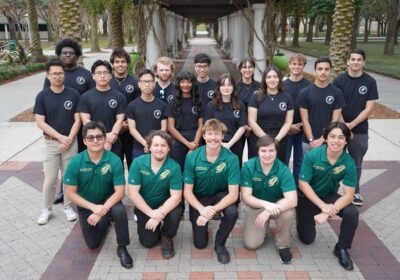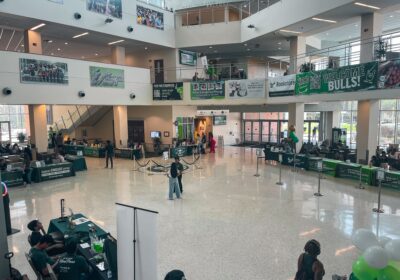USF’s new robotic machines speed up patient recovery
After undergoing robot-assisted surgery, USF graduate Dr. Cheryl Jordan said she plans to encourage her patients to use the same procedure.
The USF Health da Vinci Center for Computer Assisted Surgery, which opened this month, houses the surgical system that Dr. Lennox Hoyte, the medical director of the da Vinci center, used in Jordan’s surgery.
USF is one of two centers nationwide that has the da Vinci machines. What sets USF’s machines apart are two consoles that allow a doctor and a trainer to use the machine together. Hoyte said the two da Vinci systems at USF cost $2 million each.
Jordan had a hysterectomy and tissue grafts July 25 and was released from the hospital after two days.
Jordan, who has her own family medical practice in Stewart, Fla., said patients are normally in the hospital for a total of four days after surgery. She said it is not unusual for a patient to be in the hospital for six days.
Hoyte gave Jordan a six-week recovery time, she said. Usually patients have a recovery time from nine to 12 weeks, Jordan said.
The fast recovery time was one of the main reasons she decided to have the robot-assisted surgery done, Jordan said.
“The most important thing for me, being a working mom, is getting back there to my office. I have nobody I can depend upon,” Jordan said. “I can’t be down and out.”
Jordan said the procedure, which required general anesthesia, is actually “pretty serious.”
She was tilted on her head at a 30-degree angle for about four hours, which can affect the fluid shift of the brain, heart and lungs, Jordan said.
“I knew I needed someone who had neurology training and gynecology training – Hoyte had that,” Jordan said.
Hoyte said he has done close to 100 surgeries using the robot-assisted machines.
Jordan said she has no regret about having the surgery using the da Vinci system.
“I probably would have done it sooner if I had known about this,” Jordan said.
She said less tissue manipulation and less pain means a faster recovery and return to “normal” life.
“It’s about less down time, less pain…it does minimize cost in many ways,” Jordan said. “I’m back to work so it does minimize loss of income. The less time I’m in the hospital lowers the cost and the last place the patient wants to be is the hospital.”







